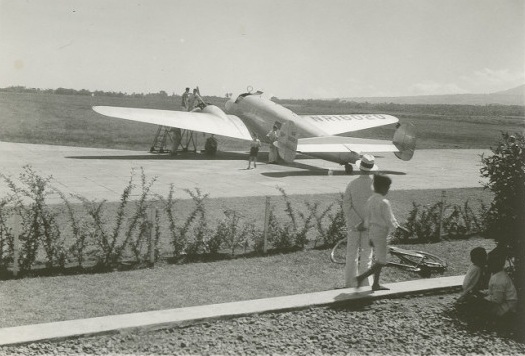
11 June 1957, 4:37 p.m., EST, (20:47 UTC): The Convair XSM-65A Atlas, number 4A, lifted off from Launch Complex 14 at the Cape Canaveral Auxiliary Air Force Station in Florida. This was the first launch of a prototype Atlas intercontinental ballistic missile.
At T+26 seconds, the number two engine lost thrust. The rocket began to tumble and at T+50 seconds, the destruct signal was sent by the range safety officer. The Atlas had reached a peak altitude of approximately 9,800 feet (2,987 meters).

Despite the missile’s destruction, the first flight test of the XSM-65A (also known as Atlas A) was actually considered to be a success. The engines had started normally, the launch pad release mechanism functioned as intended, and perhaps most importantly, the lightweight structure of the missile body withstood the forces experienced during the launch.
Following data analysis of the short flight, engineers determined that engine exhaust had circulated back into the engine’s thrust section, causing it to overheat. The propellant ducts were not sufficiently shielded from the heat and began to collapse. This reduced the flow of the liquid oxygen to the engine, effectively throttling it back.
Atlas 4A had been previously tested at Convair’s static test facility in Sycamore Canyon, east of MCAS Miramar, in the Scripps Ranch area of San Diego, California. It is possible that Atlas 4A had suffered internal damage during test firing.



Atlas A was 76 feet, 11 inches (23.444 meters) long and 11 feet (3.353 meters) in diameter. At liftoff the missile weighed 180,666 pounds (81,949 kilograms), and at burnout 17,721 pounds (kilograms).
The Atlas is primarily constructed of very thin stainless steel sheet. Rather than using a supporting internal structure, the rocket used “balloon tanks” so that it could be built with minimal weight. The fuel and oxidizer tanks supported the outer skin, but could only do so when pressurized. When the rocket was not fueled, these tanks were pressurized with nitrogen at 5 pounds per square inch (34 kilopascals). If left unpressurized, the rocket would collapse under its own weight.


Yaw, pitch and roll control of the Atlas after the booster section was jettisoned was provided by two smaller Rocketdyne LR101 vernier thrusters, producing 1,060 pounds of thrust (4.7 kilonewtons) at Sea Level.





An unexpected side effect of the Atlas missile programs was the development by the Rocket Chemical Company of its Water-Displacing Formula 40, popularly known by its trade name of WD-40. This universal lubricant was used on the stainless steel surfaces of the Atlas to prevent rust and corrosion.
© 2023, Bryan R. Swopes














